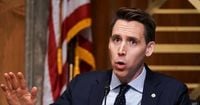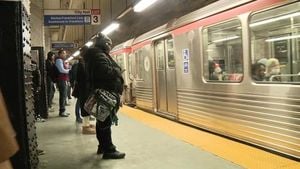San Francisco and Washington, D.C., found themselves at the heart of a fresh political storm this week, as two high-profile moves by President Donald Trump sparked fierce debate about public safety, federal power, and the meaning of American heritage. The president’s threat to deploy National Guard troops to San Francisco—coupled with his controversial demolition of the White House’s East Wing to make way for a new $250 million ballroom—has drawn sharp reactions from local leaders, lawmakers, activists, and the public alike.
On October 24, 2025, President Trump made headlines with his renewed threat to send the National Guard into San Francisco, describing the city as “dangerous” and claiming that residents were calling for federal intervention. According to the Wall Street Journal, Trump asserted, “The difference is, I think they want us in San Francisco,” suggesting that the city’s struggles with crime and homelessness warranted outside help. Yet, local officials and many residents quickly pushed back, painting a far different picture of the city’s current state.
“This is a safe American city,” declared Mayor Daniel Lurie, as quoted by BBC. “We’ve got this in San Francisco.” Lurie and other city leaders pointed to a raft of encouraging statistics: overall crime is down 26 percent compared to last year, and car break-ins have dropped to a 22-year low. The city’s population of about 830,000 is seeing signs of renewal, with AI startups leasing new office space, home prices on the rise, and public transit use at its highest since the COVID-19 pandemic. Office visits are up 21 percent from last year, a clear sign that downtown is bouncing back after the economic blows of recent years.
San Francisco’s recovery, however, is still a work in progress. The pandemic left scars—shuttered businesses, increased homelessness, and a spike in drug use, particularly in neighborhoods like the Tenderloin. But as the Wall Street Journal recently noted, the city appears to be “breaking out of its doom loop.” Streets are cleaner, large homeless encampments have mostly disappeared, and city workers are out in force, providing support and services to those in need. Drug use remains a stubborn problem in some areas, but the overall trajectory is upward.
Despite these improvements, Trump’s characterization of San Francisco as a city in crisis has sown confusion and worry among residents. “You’ve been walking around the city—it’s peaceful,” said retail worker Kate Freudenberger to Reuters, reflecting the sentiment of many who feel the president’s rhetoric is out of step with reality. Salesforce CEO Marc Benioff, who initially made waves by calling for the National Guard to address crime ahead of his company’s major conference, later walked back his comments, declaring the event the “largest and safest” ever held.
For city leaders, the president’s threat is not just unwarranted—it’s a potential overreach. Mayor Lurie has said he’s open to more federal help in fighting drug trafficking, but he’s adamant that sending in troops is not the answer. Voters have already backed tougher crime-fighting measures, including the use of police drones and surveillance technology, replacing a progressive district attorney with a tougher alternative, and increasing police hiring. As the mayor put it, “We’re doing the work to make San Francisco safer every day.”
California’s state government is preparing for a legal showdown if Trump follows through. Governor Gavin Newsom and other officials have vowed to fight any federal troop deployment in court, much as they did when Trump attempted to send the Guard to Los Angeles. California Attorney General Rob Bonta warned that he would sue “within hours, if not minutes” of any such move. Past lawsuits in cities like Chicago and Portland have successfully blocked federal troops from patrolling city streets, setting a precedent for what could become a high-stakes legal battle.
Meanwhile, in Washington, D.C., a different controversy is unfolding. On October 20, demolition crews began tearing down the East Wing of the White House as part of President Trump’s plan to build a privately funded, $250 million ballroom. The move has drawn immediate criticism from historic preservation groups, lawmakers, and social media users, who accuse the administration of destroying a vital piece of American history.
Senator Josh Hawley of Missouri leapt to the president’s defense during a heated exchange with CNN reporter Manu Raju on October 22. When asked about the wisdom of “uprooting” an iconic building, Hawley shot back, “I hear all of a sudden from my liberal friends that they’re very concerned about our history. Really? These are the same people who tore down every statue they could get their hands on in the last four years.” He cited the toppling of statues of figures like Christopher Columbus, Thomas Jefferson, and Theodore Roosevelt during the Black Lives Matter protests of 2020, arguing that critics were showing “double standards” when it came to historical preservation.
“Oh, give me a break. I mean, give me a break,” Hawley said, dismissing the outrage as selective and politically motivated. His remarks, reported by Overton News, have added fuel to a debate that shows no signs of cooling.
The White House, for its part, has mounted a robust defense of the project. Press Secretary Karoline Leavitt, speaking at a briefing on October 23, explained that the demolition was necessary to modernize and stabilize the East Wing. “With any construction project, changes come. And we have informed all of you,” she said, insisting that the administration had been transparent about the renovations. “The plans changed when the president heard counsel from the architects and the construction companies who said that in order for this East Wing to be modern and beautiful for many, many years to come, for it to be a truly strong and stable structure, this phase one that we’re now in was necessary.”
Leavitt further emphasized the president’s commitment to the White House as “the people’s house,” saying, “It’s going to be much more stable, strong, secure, and more beautiful than ever once it’s complete.” The administration also noted that the ballroom addition is privately funded and intended to “echo the storied history of improvements and additions by presidents to the executive residence.” In a statement, the White House dismissed the criticism as “unhinged,” accusing media outlets of sensationalizing the story.
Yet, for many, the images of the East Wing’s demolition are hard to reconcile with the notion of preservation. Historic preservationists argue that even well-intentioned modernization risks erasing irreplaceable elements of American heritage. Lawmakers on both sides of the aisle have weighed in, some supporting the need for upgrades, others lamenting the loss of a piece of the nation’s architectural fabric.
As both San Francisco and Washington, D.C., grapple with the aftermath of these decisions, the broader questions remain: Who gets to define what is worth preserving, and what is the right balance between security, modernization, and history? With lawsuits looming and public opinion divided, the answers are unlikely to come easily—or quietly.
For now, the only certainty is that the debate over America’s cities and symbols is far from settled, and the consequences of today’s choices will echo for years to come.





